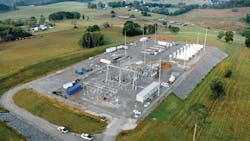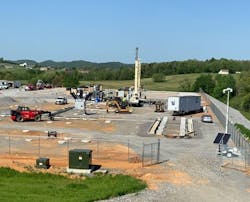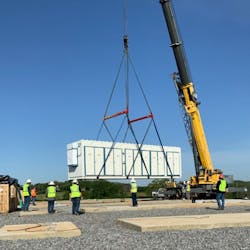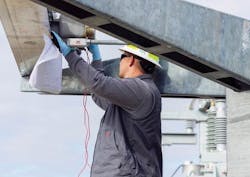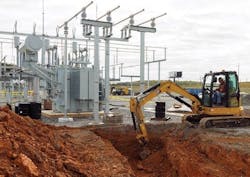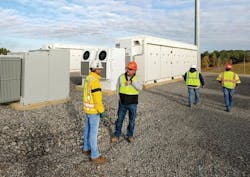Energy Storage Helps TVA Enhance Renewable Energy Resources
The Tennessee Valley Authority (TVA) aspires to have a carbon-free energy system by 2050, which includes the deployment and installation of 10GW of solar by 2035. To support the expansion of our renewable energy fleet, TVA will need to add increasingly more energy storage systems to our resource mix.
Energy storage technologies like pumped storage hydropower (pumped hydro), compressed air energy storage, batteries and other technologies increase grid flexibility and help enhance the benefits of renewable energy resources. Varied, renewable energy resources rely on weather conditions to perform reliably, meaning that on stormy days, renewable energy resources will produce varied and inconsistent energy. Energy storage systems can help smooth energy generated from wind, solar and other variable resources.
How Storage Helps TVA
There is an imbalance between electricity demand and the amount of available solar energy throughout the day. When this load imbalance is shown in a graph, it creates a curve — known by the industry as the duck curve. Check out the video below to learn what causes the duck curve, how it impacts the grid and TVA’s plan for ensuring energy is available when residents need it most.
The Difference Between Short- and Long-Duration Energy Storage
Short-duration storage provides four to six hours of stored energy and is responsible for smoothing and stabilizing the inconsistent energy produced by renewable energy resources. Lithium-ion batteries are the most common form of short-duration energy storage, with additional research and pilot projects aimed at testing other types of battery chemistries like flow and iron saltwater batteries.
Long-duration storage offers over six hours of sored energy. This type of energy storage can also provide backup power during extreme weather events, when grid performance and energy accessibility are affected. The most common form of long-duration energy storage is pumped hydro, both in the U.S. and worldwide. In fact, TVA has been a leader in energy storage for the past 60 years with the Raccoon Mountain pumped hydro facility. TVA relies on this resource to routinely balance our system during fluctuations on the grid. There are other types of long-duration energy storage, like compressed air and gravity storage.
While short- and long-duration storage technologies operate differently, both benefit the energy system by supporting the reliability of existing plants, providing additional load capacity and contributing to grid services. Both storage types will be key to maintaining grid resiliency while ensuring customer reliability as supply and demand change in the energy system. As technologies for energy storage continue to emerge, we’re excited to add more energy storage options to our fleet.
The Vonore Battery Energy Storage Projects
In July 2024 the first grid-scale, battery energy storage system was connected to TVA’s grid in an industrial complex in Vonore, Tennessee, about 35 miles southwest of Knoxville. The first TVA-owned and operated 20MW/40MWh lithium-ion battery will provide power to 5,300+ homes and will play a key part in TVA’s journey towards our energy system of the future!
Prior to construction the TVA issued a final Environmental Assessment (EA) and finding of no significant impact associated with a proposed Battery Energy Storage System (BESS), substation and upgrade to an existing fiber line.
Battery Storage Safety
The Vonore Battery Energy Storage System and all battery systems installed in the TVA service region have robust safety components based on best practices from other utilities. These safety measures include:
- Advanced Battery Monitoring System
- This system provides TVA operators with 24/7 information on the battery's health and temperature — notifying TVA immediately in the unlikely event of a malfunction. This technology helps TVA operate the battery optimally and avoid overuse, reducing the chances of an issue.
- Safe Distances and Barriers
- All systems will be installed to meet stringent guidelines which require space or barriers between batteries to prevent battery-to-battery fire transfer and provide room for first responders to address a fire. We also locate batteries a specified distance from communities to ensure safety and reduce exposure to faint, hum-like noise that comes from the battery.
- First Responder Training
- First responders in locations where batteries will be installed will have training and instructions to ensure they have the right knowledge and tools in the unlikely event of a battery malfunction.
Automatic Fire Protection System
The Vonore Battery Energy Storage System uses direct injection with a dry chemical and gas detection inside the battery container to help suppress a fire. Each fire protection system has been tested and meets UL 9540 standards.
Looking Ahead
The grid-scale energy storage system will provide businesses clean, low-cost, reliable electricity while helping TVA meet their sustainability goals. TVA aims to prepare for future challenges by building flexibility into the system through strategic energy storage exploration and deployment.
Decarbonization and decentralization efforts will dramatically change the grid as we know it. As TVA prepares for a more carbon-free future, TVA will continue exploring additional forms of energy storage to increase our systems’ resiliency and performance.
